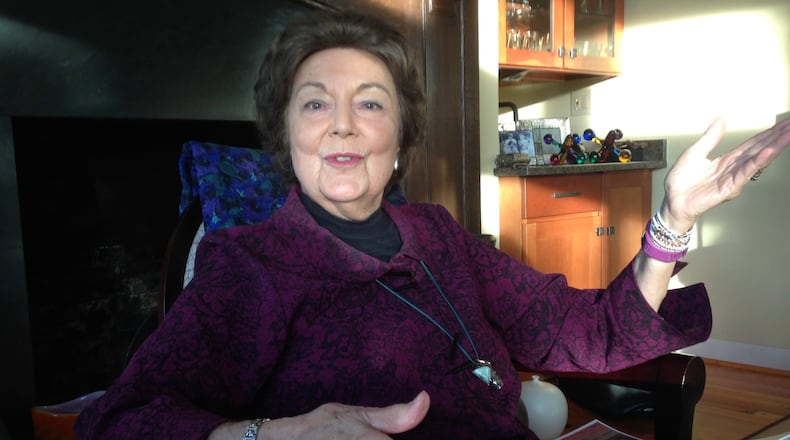Iris Bolton knows a lot about grief, and so she has come here to deliver a message. You really can survive brokenness and trauma.
That’s true even if you’ve had to face the suicide of a child. That isn’t something someone told Bolton. She has lived with that reality now for more than 40 years.
But unlike the vast majority of people who experience the loss of a loved one to suicide, Bolton resolved a long time ago to speak openly about both the pain and, in her case, the purpose such tragedy can breathe into one’s life.
“To survive the suicide of a child is amazing hard work and it takes time,” Bolton said. “But if I can make meaning out the horror of Mitch’s death and maybe help one other person, it gives meaning and purpose to his life.”
Bolton, who has spent nearly half her life counseling people struggling with loss and dismantling the stigma associated with suicide, has come once again to share her story. But what she really wants to do is have a conversation about the grief so many people feel after suicide and to offer them hope.
Her story is like so many others. The difference is in the details.
It was a Saturday, Feb. 19, 1977.
Bolton had just arrived at her home in Sandy Springs when a neighbor met her at her car.
We have to go to the hospital, he told her.
Who? Bolton asked, puzzled.
Mitch, he told her.
Bolton assumed her boy had been in a motorcycle accident but the neighbor assured her this was worse.
“My stomach turned over and I knew something terrible had happened,” she said.
The neighbor drove her to Northside Hospital, where her husband and oldest son John met them in the emergency room.
Where is he, she asked Jack.
You don't want to see him, he responded.
But Bolton had to. She charged through the emergency room and found him hooked to a ventilator. Mitch’s chest was still rising and falling. He didn’t look dead at all. The ventilator was breathing for him to keep his kidneys viable.
When a nurse finally asked for permission to donate his organs, it hit Bolton that her son was indeed dead.
Mitch was Iris and Jack Bolton’s second born, a handsome 20-year-old who was the life of the party. He sang and played guitar. He was something of a ladies’ man. It just wasn’t possible that he could have killed himself.
Mitch, Jack would explain to her later, was on the phone with his girlfriend, who’d decided to end their relationship three weeks earlier.
I will be a star in the sky and watch over you, he told his girlfriend.
When they hung up, she called back on the business phone in the Boltons’ home and told Jack Bolton she’d heard a noise that sounded like a gunshot. Jack rushed back to Mitch’s room and found him there on his bed.
He died en route to the hospital.
At the time Bolton was the director of the Link Counseling Center, the nonprofit she helped found in 1971 with community volunteers. Perhaps she’d missed the signs Mitch was clinically depressed. But she believed too that people, especially teens and young adults, end their lives to end the pain that they think will never go away. They may feel rejected, humiliated or ashamed.
The shock of her own son’s suicide was horrendous; and the news and the rumors that went with it spread like wildfire.
In an effort to separate the truth from the rumors, which said that Mitch had shot at other people in the house, the Boltons decided they had to talk about what did happen to their son.
“We don’t keep secrets in our family so we had to say what it was,” she said. “We couldn’t live a lie. We knew we had to tell the truth, and the truth was easier than the rumors going around.”
The truth telling started with their three remaining sons. Suicide happens even in good families, they told them, but the tragedy need not be repeated ever again.
Admittedly, sharing their truth was scary. They were sure people would blame them and conclude that Mitch was a terrible person who gave up on life.
But in the days that followed his suicide, the Boltons’ home filled with friends and family and ministers from church, and from that moment they began the healing process, facing the truth and allowing people to take care of them.
“No one heals from this alone,’’ Bolton said.
And seldom does anyone get to healing without first deciding to survive and then helping other people do the same.
“That’s the place that helps you survive,” she said. “In helping others, you make meaning of the loss.”
You can read more about that in Bolton’s books “My Son, My Son: A Guide to Healing after Death, Loss or Suicide,” and “Voices of Healing and Hope: Conversations on Grief after Suicide,” which includes a DVD of interviews with people who faced such loss.
According to the Centers for Disease Control and Prevention, it happens a lot. The overall suicide rate for people over 10 years old rose from 12.54 to 14.98 suicides per 100,000 from 2001 to 2015. The rates were worst in rural counties of the U.S. But they were bad everywhere, especially for white men.
When it happens, it’s not unusual to struggle with why. That’s common and probably necessary, Bolton said, and yet the complex set of factors that cause suicide are as different as the people who complete the act.
The good news is Bolton survived, and so can you. Healing, though, won’t likely come until you first face the truth of what happened, share it appropriately, and if at all possible get professional help.
Then, like Bolton, you can become a symbol of hope for others.
About the Author
Keep Reading
The Latest
Featured





